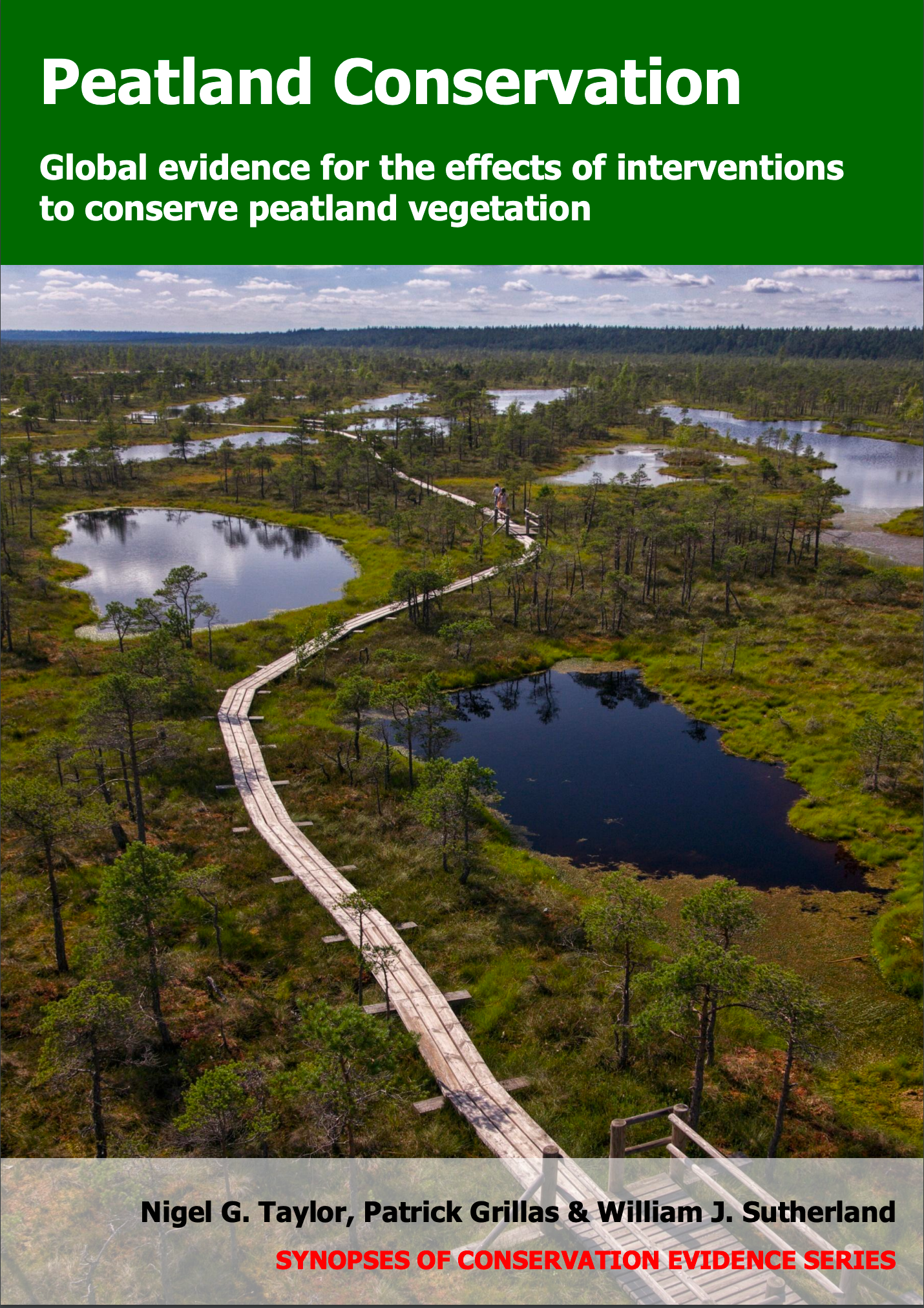Divert/replace polluted water source(s)
-
Overall effectiveness category Likely to be beneficial
-
Number of studies: 3
View assessment score
Hide assessment score
How is the evidence assessed?
-
Effectiveness
70% -
Certainty
50% -
Harms
10%
Study locations
Supporting evidence from individual studies
A before-and-after study in 1972–1987 in a historically mined raised bog in England, UK (Meade 1992) reported that after diversion of polluted inflow (along with rewetting), cover of Sphagnum moss, white sedge Carex curta and cottongrasses Eriophorum spp. increased, but cover of purple moor grass Molinia caerulea decreased. No statistical tests were carried out. Sphagnum was found in 7% of quadrats before intervention but 27% after, white sedge in 0.0% before but 0.8% after, and cottongrasses in 1.1% before and 1.5–1.7% after. In contrast, purple moor grass Molinia caerulea occurred in 100% of quadrats before intervention but only 74% after. Eighteen other herb, shrub and tree species showed variable responses (see original paper). In 1974, polluted inflow from adjacent farms was diverted away from a bog, whilst the water outflow was blocked to raise the water table. The study does not distinguish between the effects of these interventions. Vegetation cover was recorded before (1972–1973) and after (1987) intervention, as presence/absence of species in 8,945 contiguous 4 m2 quadrats covering the whole site.
Study and other actions testedA study in 1980–2006 in a floating bog in Japan (Tsujino et al. 2010) found that after removing polluting water sources (sewage and tap water), cover of Sphagnum moss increased. Cover of vascular plant species showed mixed responses. Between 1980 and 2006, the area of moss hummocks (containing blunt-leaved bog moss Sphagnum palustre) increased from 5,900 m2 to 8,500 m2. The area of moss mats (dominated by feathery bog moss Sphagnum cuspidatum) increased from 420 m2 to 1,010 m2. Of nine abundant vascular plant species, cover of three decreased (including sedge Carex thunbergii and bogbean Menyanthes trifoliata), cover of three increased (including swamp millet Isachne globosa) and cover of three did not change (including common reed Phragmites australis). Historically, the lake under the bog was polluted by sewage from a hospital, discharge/leakage of tap water from a purification plant and runoff from a road. Interventions to reduce pollution were (a) construction of a sewage system in the 1960s and (b) pumping of tap water leakage from 2003. Deliberate tap water discharge also stopped in the 1960s. Road runoff continued. Vegetation cover was extracted from maps made in 1980 and 2006.
Study and other actions testedA study in 1984–2013 in a floating rich fen in the Netherlands (Kooijman et al. 2016) found that after replacing a nutrient-rich water source with lower-nutrient water (along with other interventions to reduce pollution), moss cover changed to species characteristic of lower nutrient levels and vascular plant biomass decreased. Over 25 years following intervention, four of seven moss species characteristic of low nutrient levels increased in cover (from 1–62% to 11–83%). Meanwhile, six of seven moss species characteristic of high nutrient levels decreased in cover (from 7–78% to 1–32%). Over 28 years, vascular plant biomass decreased from 1,123 g/m2 to 287 g/m2. Since the 1970s, the fen water source was changed from a nutrient-rich river to a nutrient-poor lake, the input water was rerouted on a longer path to allow more time for nutrient reduction, and water purification facilities were built. The study does not distinguish between the effects of these interventions. In addition, there was a general reduction in nutrient input from urban areas. In 1988 and 2013, cover of every moss species was recorded in a 25 x 200 m area. In 1984 and 2012, above-ground vascular plant biomass was collected, dried and weighed.
Study and other actions tested
Where has this evidence come from?
List of journals searched by synopsis
All the journals searched for all synopses
This Action forms part of the Action Synopsis:
Peatland Conservation
Peatland Conservation - Published 2018
Peatland Conservation





)_2023.JPG)














